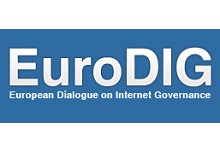Information disorder: Causes, risks and remedies
7 Jun 2018 02:00h
Event report
Ms Claudia Luciani (Director of Democratic Governance and Anti-Discrimination, Council of Europe) opened the session by presenting the big picture about human rights and the challenges that new technologies are bringing.
She explained how the Council of Europe is dealing with these challenges in key areas: democracy, rule of law, and human rights. She referred to numerous mechanisms such as the programme for digital citizenship education, which aims to enable pupils to make informed choices. The Budapest Convention on Cybercrime is also an important mechanism that preserves the rule of law, by enabling trans-border access to data between authorities, while respecting data protection principles. Moreover, with its recommendations, guidelines, and Convention 108, the Council is addressing the new challenges that could jeopardise human rights, such as algorithms.
Ms Nadia Tjahja (Steering Committee Member, Youth Coalition of Internet Governance, as moderator, emphasised that the focus of this session should be on information disorder, which goes beyond fake news. Here we should speak about misinformation, mal-information and disinformation, and how we can address these phenomena and whether there are effective remedies to do so.
Mr Paolo Cesarini (Head of the Unit, Media Convergence and Social Media, Directorate General for Communications Networks, Content and Technology, European Commission (EC)) reflected on the EC’s view on information disorder as a somewhat narrow category, focusing on disinformation. The key element in this view is the harm that can be caused to democracies as well as public policies. There is also the question of how to avoid information pollution when the nature of the Internet is such that everybody should be able to express their views. Since this phenomenon is evolving and promotion mechanisms will change, transparency should be one of the most important mechanisms. This transparency should refer to the flow of money that finances this information, political advertising, human versus automatic interaction, as well as the sources of this information in order to enable the user to recognise trustworthy sources. To cope with this phenomenon, resources will be required in order to promote media literacy, to support grass-root organisations, and for fact checkers to develop best practices for all groups of citizens.
Moving forward, Ms Ana Kakalashvili (Analyst, Institute for the Development of Freedom of Information) addressed the regulatory attempts of governments to cope with fake news. Through highlighting examples of some countries, she raised the question of whether strict regulation is the right answer. Regulations in the area of free speech, that are not carefully designed, are even more dangerous than the very problem that they should solve. This is especially the case in countries with young democracies. In the end, she made a distinction betwen propaganda and fake news, by stating that propaganda requires different treatment and official recognition as such.
Mr Patrick Penninckx (Head of Department, Information Society, Council of Europe) started with the question of trust and trusted information. According to the Edelman Trust Barometer, the media is the least trusted institution. People are not able to recognise the difference between rumors and real journalism, and the number of people who trust social media as source of information is growing. Along with that, there is a current trend of people reading less and less. Even though the media has specific roles in this process, especially in regard to providing high quality journalism, it is also important to debunk disinformation not just by the media, but by all other stakeholders.
Ms Tamar Kintsurashvili (Executive Director, Media Development Foundation), who teaches propaganda research methods at the Ilia State University, stated that the problem is much wider than fake news or information disorder, because propaganda is part of hybrid warfare. This problem in not only present in countries with an undermined democracy, but also in democratic countries (for example in the case of elections). In order to properly address the issue, we need a collaborative approach, but also to regain trust and preserve the quality of media.
Ms Clara Sommier (Public Policy Analyst, Google) explained how Google and YouTube are trying to address disinformation issues, and how so far, they have designed five different mechanisms. First, they are trying to promote quality and trustworthy content. Second, it is important to cut money flows, by disabling the advertising option for platforms that mislead users. Moreover, they work on empowering users via fact checking of tags. They have dedicated funds to supporting an industry that is working on innovative solutions to tackle this problem, such as via machine learning, as well as to support the press via a subscription option.
At the end of the session, Ms Jutta Croll (Project Manager and Chairwoman, Digital Opportunities Foundation) concluded with a brief message in which she reflected on the concept of information disorder, its motives to harm democracy, and questioned whether regulatory mechanisms are an effective remedy.
Related topics
Related event

